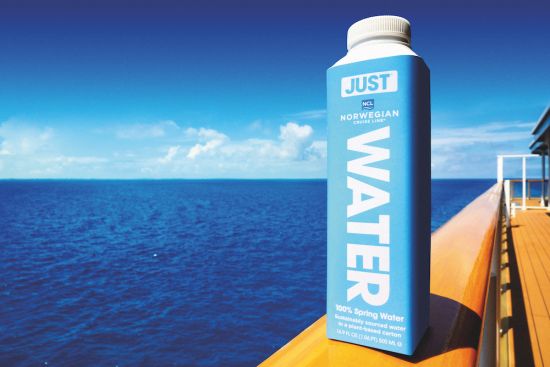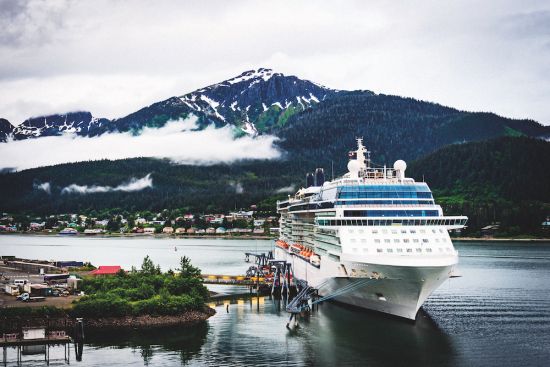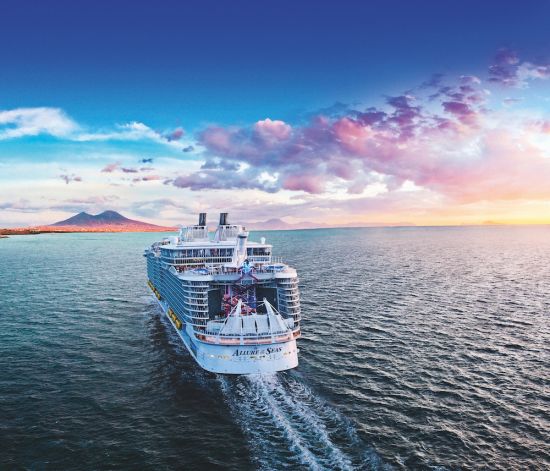Cruising With A Conscience: A Guide To Sustainable Cruising
As the world wakes up to climate change, cruising faces an uncomfortable time in the spotlight. So what are major lines doing about it?
No issue is more important than safeguarding the planet we live on. A groundswell of public opinion, led by figures such as 17-year-old Swede Greta Thunberg, is demanding action to lower greenhouse gas emissions, eliminate single-use plastics and clean up the oceans.
As a very visible part of the tourism industry, cruise lines have come under increasing scrutiny for their effect on the environment. Nowadays, the key message in any cruise line’s press conference – once it has announced the headline-grabbing features of its latest ships – is likely to be the progress it is making towards ‘green goals’.
At the launch of its new Grandiosa in Hamburg last year, MSC Cruises announced that it was going carbon neutral from 1 January 2020, with all emissions from its 17-strong fleet offset by projects that conserve and restore ocean habitats.

Executive chairman Pierfrancesco Vago said: “We are a company with more than 300 years of maritime heritage. This is another step forward in our long-standing commitment to protecting the oceans, the destinations we visit and the port communities we touch.”
The Swiss-based company has also begun building MSC Europa, the first of five cruise ships powered by liquefied natural gas (LNG) – the world’s cleanest- burning fossil fuel – that will come into service between 2022 and 2027.
This is part of a global effort by the cruise industry to cut carbon dioxide emissions by 40 per cent by 2030. To that end, To that end, Norwegian line Hurtigruten is gearing up to launch its second hybrid-powered ship and plans to use liquefied biogas – fossil-free, renewable gas from dead fish and other organic waste – as fuel in other parts of the fleet.
Hurtigruten will also replace diesel propulsion with battery packs and gas engines on several other ships, and its ultimate goal is to operate emission-free. Cruise lines point out that in total they operate a mere 280 ships – just half of one per cent of the 50,000 major vessels sailing the oceans.
And while cruise companies can control what goes on at sea, some of their more ambitious plans for sustainable cruising – such as using LNG, shoreside power and alternatives to plastics – rely heavily on ports and other land-based suppliers also changing the way they work.

Greenhouse gases
The new generation of ships powered by liquefied natural gas will eliminate sulphur emissions, slash nitrogen oxides by 85 per cent, cut fine particles by between 95 and 100 per cent and reduce greenhouse gas emissions by 20 per cent.
Just two LNG cruise ships are currently in service, but a further 26 are on order, including P&O’s newcomer, Iona, due to launch in May. While some experts say that up to 80 per cent of new cruise ships will rely on LNG for primary propulsion by 2025, the technology is too expensive to retro-fit into older ships, and supply of LNG refuelling stations across the world remains a problem.
The biggest cruise operator, Carnival Corporation, hit its target to reduce carbon emissions by 25 per cent three years ahead of its 2020 goal.
It has also spent $500million on exhaust systems known as ‘scrubbers’, which remove sulphur from the funnel and return it, via waste-water, to the sea, where it naturally occurs. The Miami-based company also operates the world’s first LNG ships, AIDAnova and Costa Smeralda, and has nine more on order.
Rival line Royal Caribbean is introducing three Icon-class LNG ships from 2022. ‘With Icon class, we move further in the journey to take the smoke out of our smokestacks,’ says company chairman Richard Fain.

Single-use plastics and recycling
Today’s cruise ships recycle 60 per cent more waste per person than the average citizen on shore – that’s a total of 80,000 tons of paper, plastic, aluminium and glass every year. There are even some that reuse 100 per cent of the waste on board, either by recycling it or by converting it into energy.
As for single-use plastic bottles, Norwegian Cruise Line has now banned these fleet-wide, replacing them with plant-based cartons made from 82 per cent renewable materials – a move that will save six million plastic bottles every year. NCL’s president and CEO Andy Stuart says:
“The elimination of single-use plastic bottles is just the latest environmentally responsible action we are taking to reduce our footprint and encourage others to protect our natural resources.”
Other waste is being tackled, too. Costa Cruises has given more than 150,000 portions of leftover food to charity, while Carnival Cruise Line is collecting nearly 40 tons of discarded soap each year from its ships, to be recycled into new bars for vulnerable communities worldwide.
On Royal Caribbean ships, rubbish is sorted by hand into onboard shredders, bailers, compactors and crushers until recycling hubs are reached.

Better fuel efficiency
Did you know that even the type of paint used on the hull can save fuel? A special coating deters the growth of barnacles, algae and other marine organisms, bringing a significant reduction in drag. But the improvements to ship design are more than skin deep – for example, some vessels now recover heat from the kitchen and laundry room to warm the pool and other areas.
Carnival Corporation invests $70 million a year on energy-saving initiatives, cutting fuel consumption by 12 per cent in the past decade. It has also announced tests of cutting-edge battery and fuel-cell powerplant technology.
Royal Caribbean uses ‘air lubrication’ systems – bubbles that reduce friction between the hull and the water – and when its giant Harmony of the Seas launched in 2016, it was 25 per cent more efficient than its Oasis-class sister ship Allure, christened just six years earlier.
Safeguarding the oceans
All of the 100-plus cruise ships currently on order around the world will have systems that clean up waste water well beyond statutory requirements. And when it comes to freshwater, although each cruise guest uses around 225 litres per day, much of this is produced on board by desalinating seawater (Carnival Corporation generates 79 per cent of the water used on board this way, and MSC claims that its new Grandiosa can produce three million litres every day).

Shore-side power
Another way for cruise ships to cut emissions is to use shoreside electricity – literally to plug into the local supply and turn off the diesel engines when in port. Three out of every ten ships currently have this capability, as will nearly all new vessels.
However, so far only 16 ports around the world have the technology, including the Alaskan capital, Juneau, which uses surplus hydroelectric power. But MSC Cruises estimates that if it could plug ships into renewable energy sources in every port, it would prevent more than 325,000 tons of carbon dioxide emissions.
While the big cruise lines are proud of their efforts so far, they all realise that much work remains to be done. Roger Frizzell, chief communications officer of Carnival Corporation, tells me: “Our commitment to sustainability and environmental responsibility is a top priority for our entire company.”
As for the industry’s aim to cut carbon emissions by 40 per cent by 2030, Mr Frizzell adds: “We are committed to doing our part to achieve that significant goal, while also sharing in the International Maritime Organisation’s vision of a carbon-free shipping industry by the end of this century.”
Speaking for all operators, Andy Harmer, UK & Ireland director of trade body CLIA, says: ‘While cruise ships comprise far less than one per cent of the global maritime community, cruise lines are at the forefront of developing responsible tourism practices and innovative technologies.
‘CLIA members have invested more than $22billion in ships with new, energy-efficient technologies and cleaner fuels. And the entire shipping industry benefits from the cruise lines’ early adoption of these innovative technologies – many of which did not even exist five to ten years ago.
Five ways to be green at sea
- Bring your own refillable water bottle and a tote bag.
- Keep the same towels and bed linen as long as possible.
- Put unused cabin notices, circulars and so on in recycling bins.
- Take eco-tours such as walking/cycling and active excursions instead of coaches.
- If you can, use the stairs rather than the lift – it will keep you fitter, too.
Asian Wonders & Arabian Delights
- 20 nights, departs on the 05 Apr 2024
- Regent Seven Seas Cruises, Seven Seas Navigator
- Laem Chabang, Laem Chabang, Ko Samui, + 18 more
North Pacific Passage
- 18 nights, departs on the 13 Apr 2024
- Regent Seven Seas Cruises, Seven Seas Explorer
- Tokyo, Hitachinaka, Miyako, Iwate, + 16 more
Whale Watching Expedition
- 7 nights, departs on the 01 May 2024
- Regent Seven Seas Cruises, Seven Seas Explorer
- Vancouver, British Columbia, , Ketchikan, Alaska, + 5 more
Ocean Air & Spanish Flair
- 14 nights, departs on the 10 Apr 2024
- Regent Seven Seas Cruises, Seven Seas Grandeur
- New York, New York, , Kings Wharf, + 12 more
